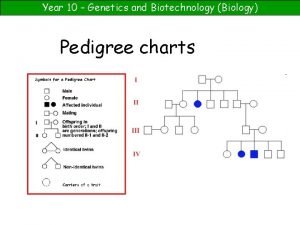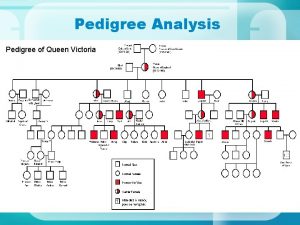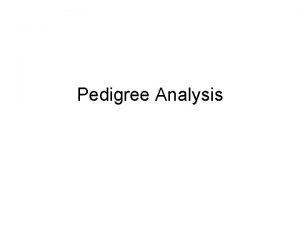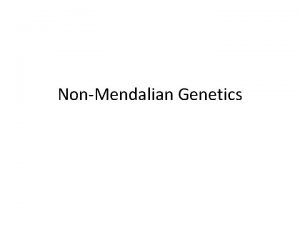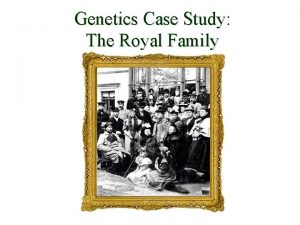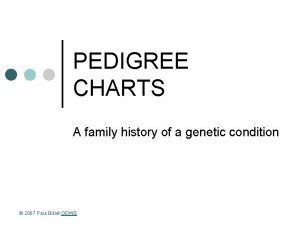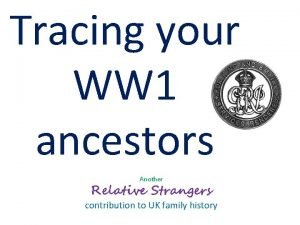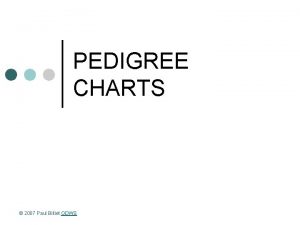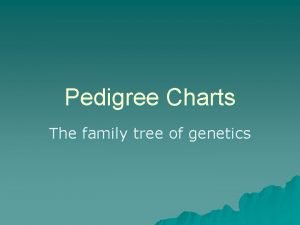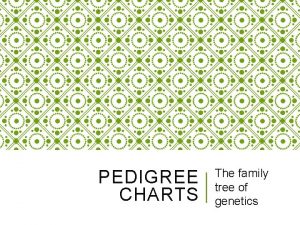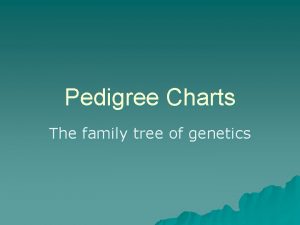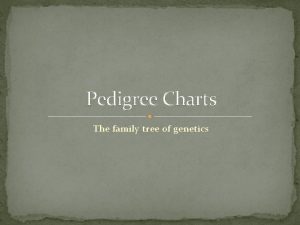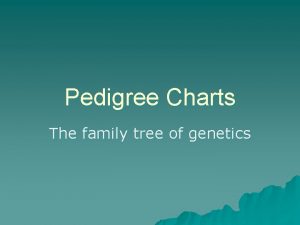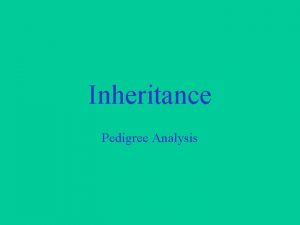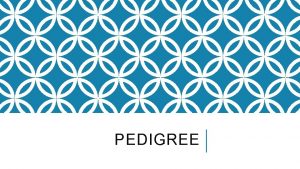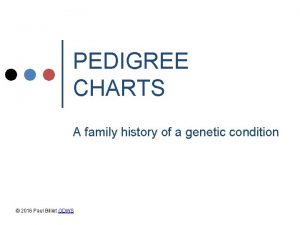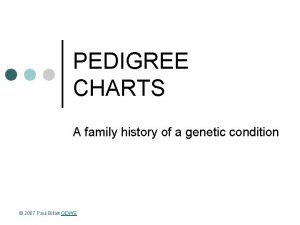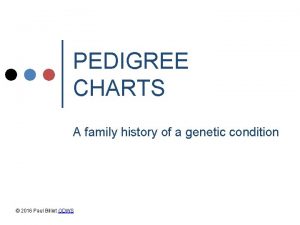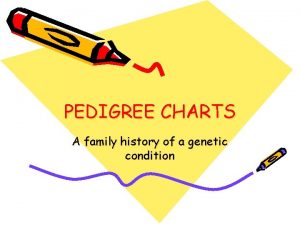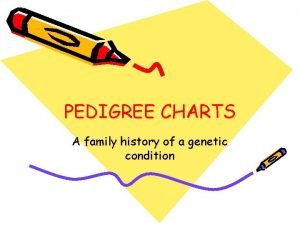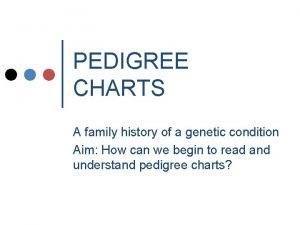PEDIGREE CHARTS A family history of a genetic





















- Slides: 21

PEDIGREE CHARTS A family history of a genetic condition or trait

WHAT IS A PEDIGREE CHART? Pedigree charts show a record of the family of an individual. They can be used to study a hereditary condition or trait. They are especially useful when there are large families that cover several generations. © 2007 Paul Billiet ODWS

STUDYING HUMAN GENETICS Today genetic engineering has new tools to offer doctors studying genetic diseases A genetic counselor will still use pedigree charts to help determine the distribution of a disease in an affected family © 2007 Paul Billiet ODWS

ORGANIZING A PEDIGREE CHART Generations are identified by Roman numerals & are on different levels. I II IV

Males are represented by the square Females are represented by the circle I II IV

Parents are connected with a horizontal line. Offspring are below the parents and the bracket is connected by a vertical line. Siblings are within the same bracket.

READING THE SYMBOLS USED IN PEDIGREE CHARTS Normal male Affected male Normal female Affected female A marriage with five children, two daughters and three sons. The eldest son is affected by the condition. Marriage Eldest child Youngest child © 2007 Paul Billiet ODWS

SEX LINKED DISORDER: COLOR-BLINDNESS

GENETIC COUNSELORS USE A PEDIGREE CHART TO PREDICT THE PROBABILITY OF TRANSMITTING AN INHERITED DISORDER. Cystic Fibrosis – autosomal recessive

HUNTINGTON’S DISEASE IS AUTOSOMAL DOMINANT.

Genetic Disorders

COMMON GENETIC DISORDERS Syndrome Abnormality Incidence per 10 000 births Lifespan (years) Down Trisomy 21 15 40 Edward's Trisomy 18 3 <1 Patau's Trisomy 13 2 <1 Turner’s Monosomy X 2 (female births) 30 -40 Klinefelter’s XXY 10 (male births) Normal XXX 10 (female births) Normal XYY 10 (male births) Normal

DOWN SYNDROME -Caused by the presence of all or part of an extra 21 st chromosome. -Occurs 1 in every 800 -1000 births. -Risk having a baby with Down Syndrome increases as the mother’s age increases. -Can be determined before birth (amniocentesis or umbilical blood sampling). -Down Syndrome is usually not inherited.

DOWN SYNDROME. THE ARROW POINTS TO THE EXTRA CHROMOSOME 21.

CHARACTERISTICS -Short stature. -Flat broad face with small ears and nose. -Upward slanting eyes. -Small mouth with short roof. -Hypertonia (floppy muscles). -Heart defects are common. -Often are mild mentally delayed.


EDWARD’S (TRISOMY 18) -Most common trisomy after Down’s. -Occurs at the meiotic divisions. -Most fetus’ die in utero. -Only 5 -10% survive the first year of life. Some survive to adulthood! -Cause of death-apnea and heart abnormalities. -Many visible malformations.


SICKLE CELL ANEMIA -Defective hemoglobin (only lives 10 -20 days vs 120 days) -Symptoms: constant and/or severe pain, shortness of breathe, jaundice, delayed growth -Health issues: infections, strokes, acute chest syndrome -Most affected: 1 in 500 African-Americans, 1 in 1000 -1400 Hispanic-Americans

SICKLED CELLS

HEMOPHILIA A disorder in which blood doesn't clot normally. Symptoms: -many large or deep bruises -joint pain and swelling -unexplained bleeding -blood in urine or stool
 Pedigree chart biology
Pedigree chart biology What is a pedigree?
What is a pedigree? Pedigrees practice
Pedigrees practice The founder effect
The founder effect Genetic programming vs genetic algorithm
Genetic programming vs genetic algorithm Genetic programming vs genetic algorithm
Genetic programming vs genetic algorithm A gene pool consists of
A gene pool consists of Gene flow vs genetic drift
Gene flow vs genetic drift What does hearsay
What does hearsay Pedigree analysis worksheet addams family
Pedigree analysis worksheet addams family Victoria pedigree
Victoria pedigree Autosomal vs sex linked pedigree
Autosomal vs sex linked pedigree Flipnob family pedigree answer key
Flipnob family pedigree answer key Rasputin family tree
Rasputin family tree Conjugal family
Conjugal family Carbon family
Carbon family Binuclear family vs blended family
Binuclear family vs blended family Ward temple and family history leader
Ward temple and family history leader Mahmood haddara
Mahmood haddara Pedigree key
Pedigree key Barnsley family history
Barnsley family history Caribbean family history
Caribbean family history
